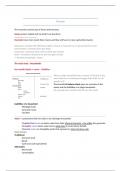Resume
Samenvatting 'Introduction to Financial Markets'
- Cours
- 1107TEWBDK (1107TEWBDK)
- Établissement
- Universiteit Antwerpen (UA)
Uitgebreide en gedetailleerde samenvatting van introduction to financial markets gegeven door prof. Marc de Ceuster
[Montrer plus]



